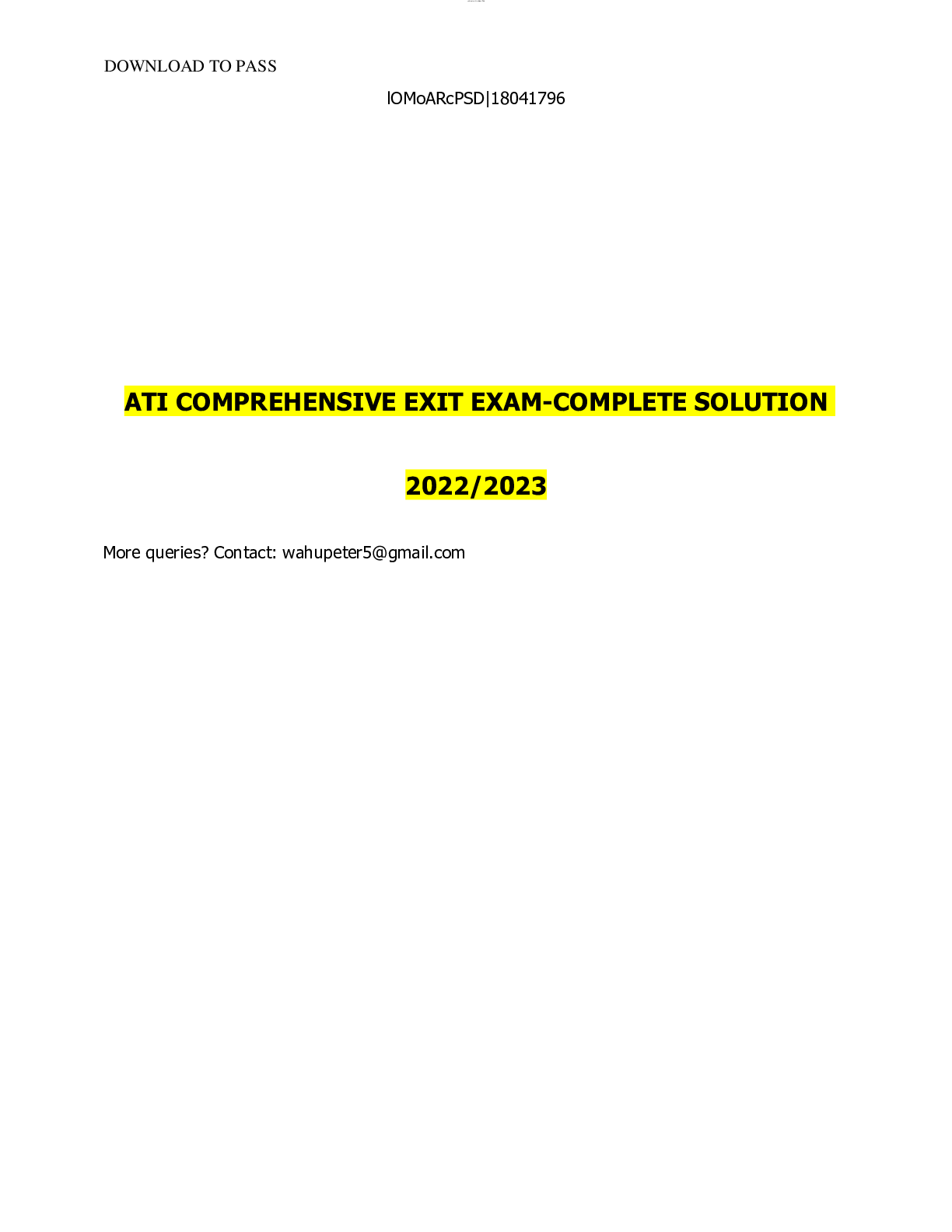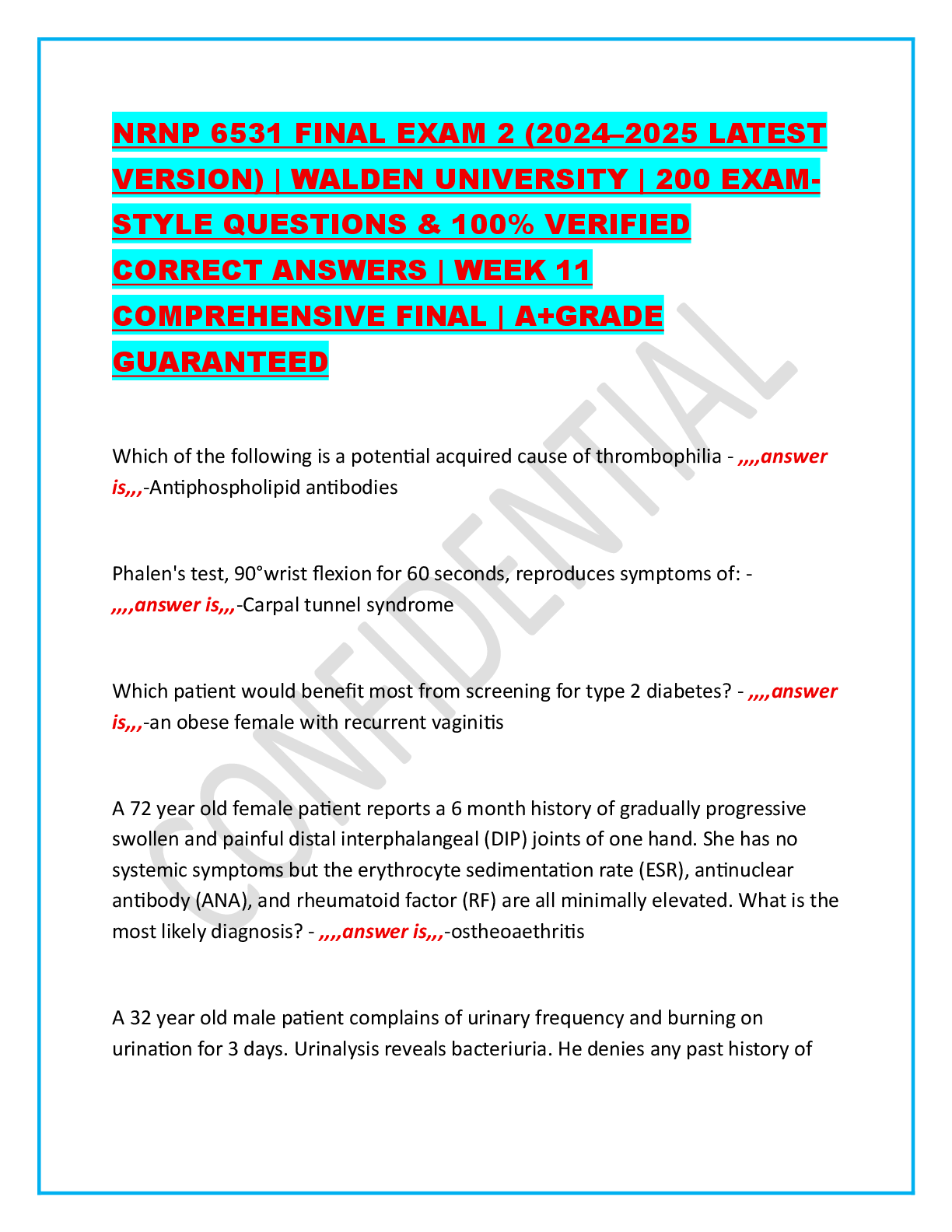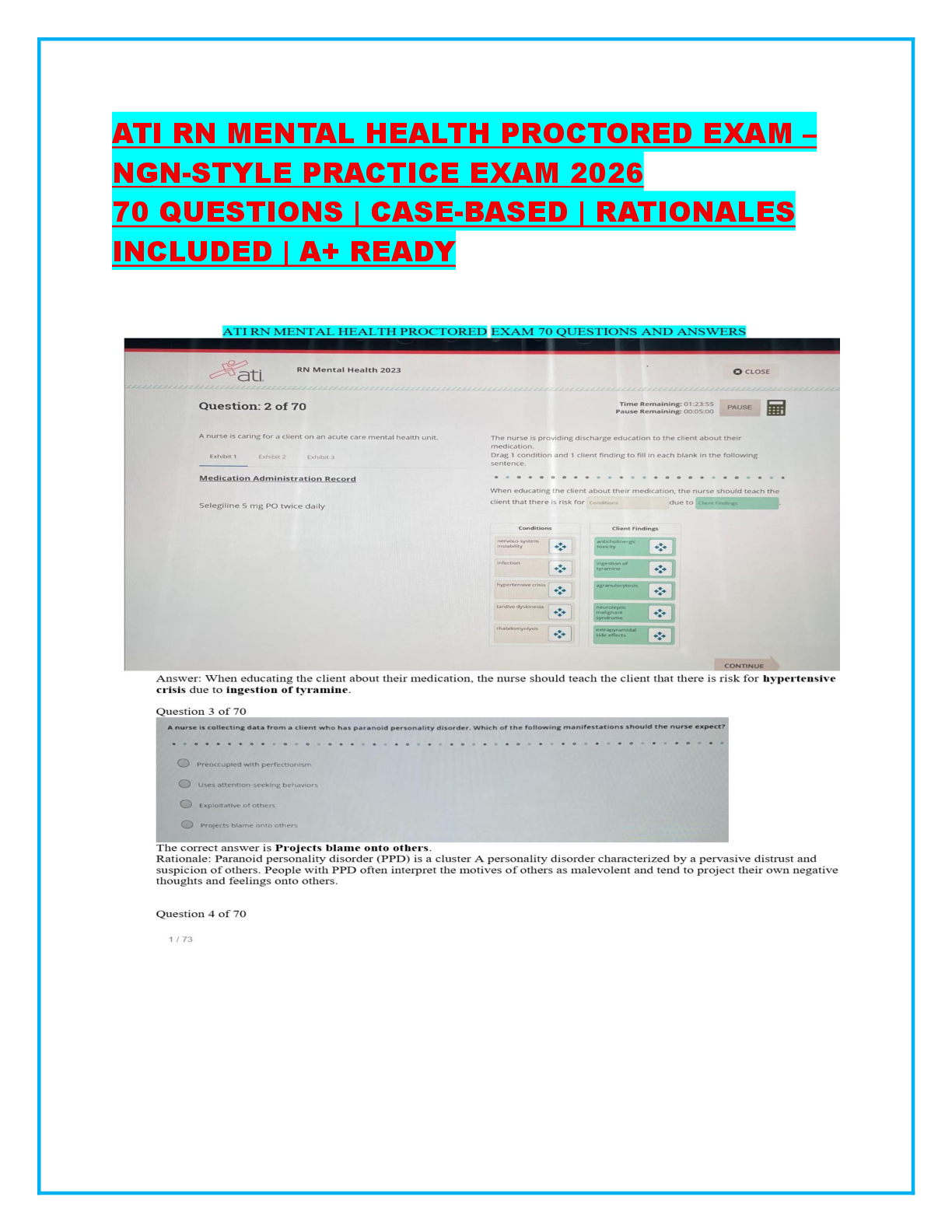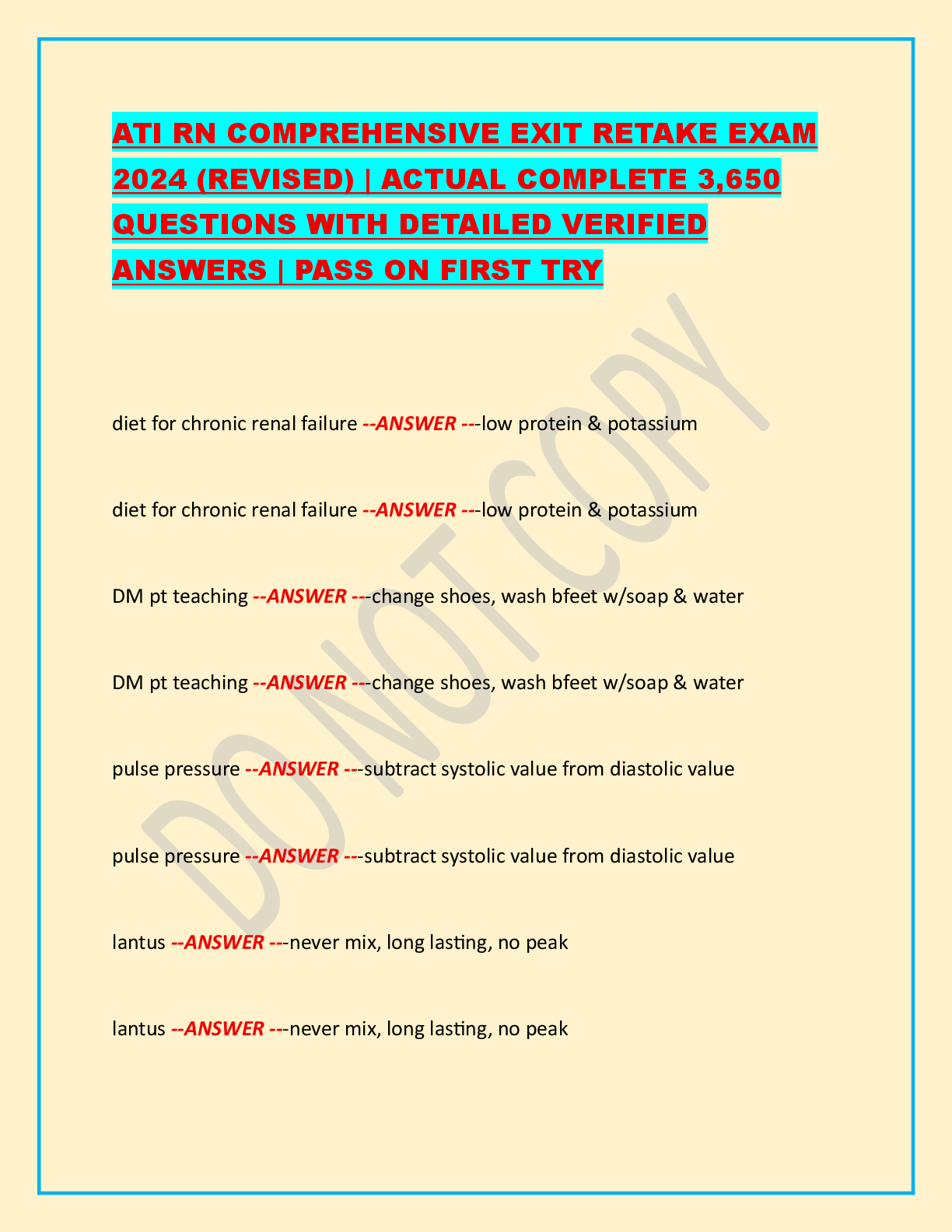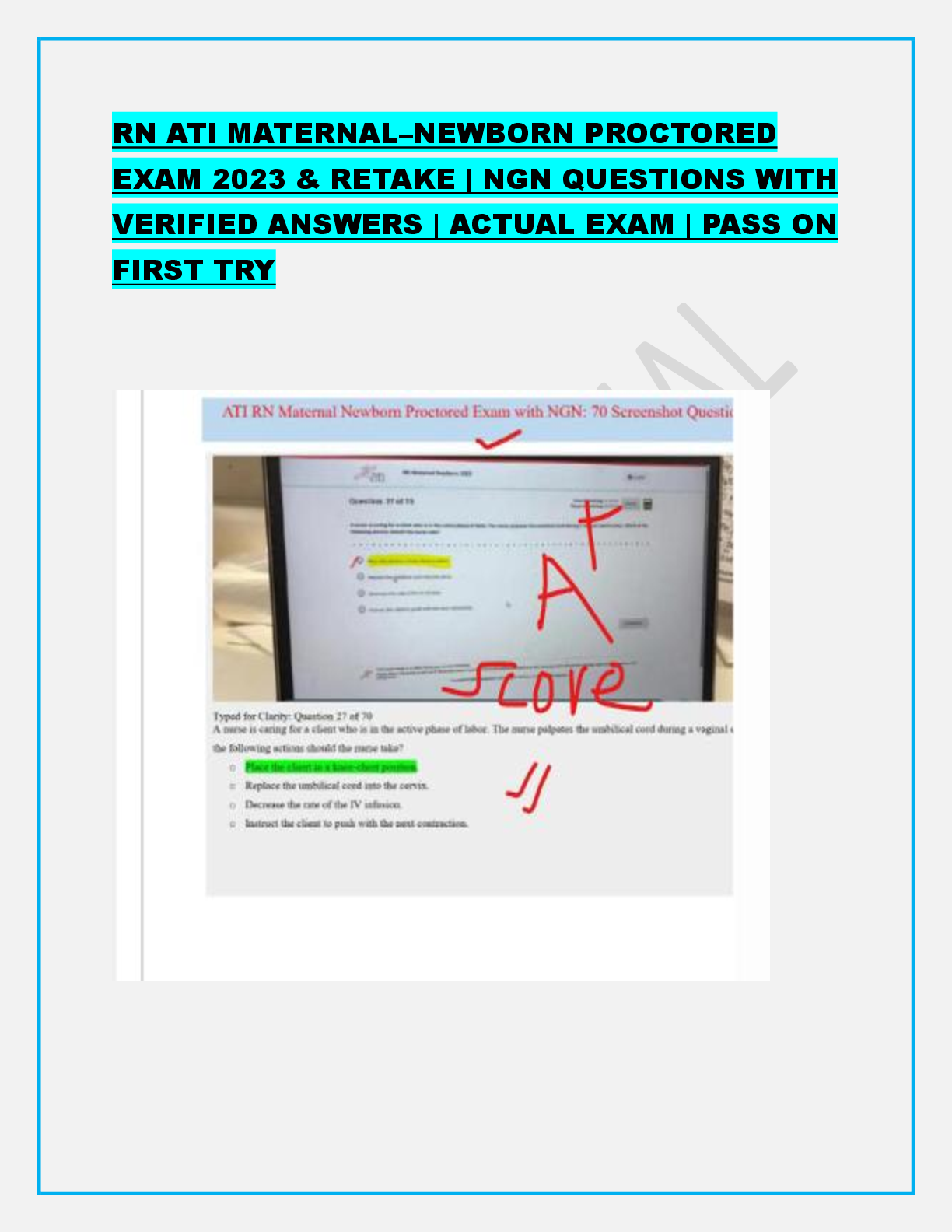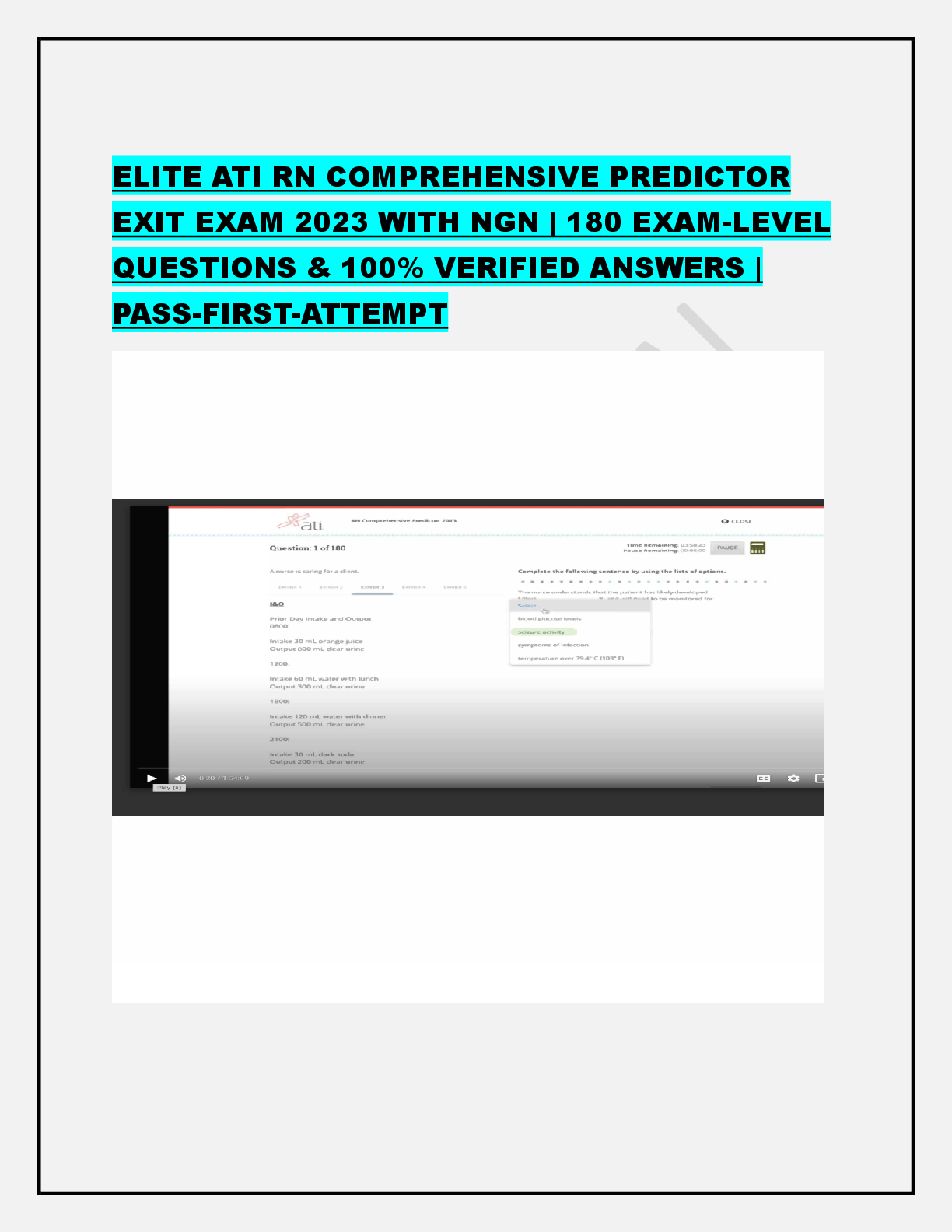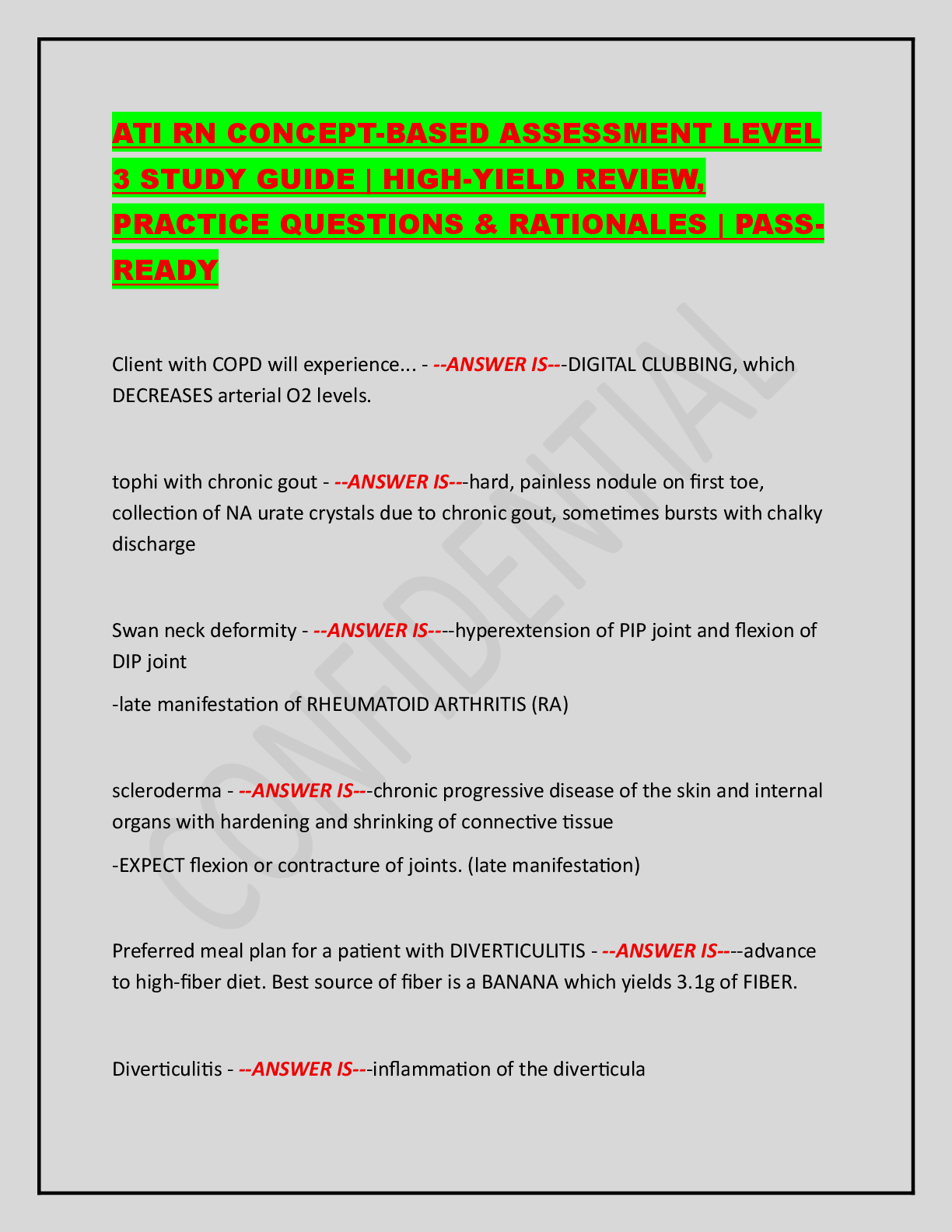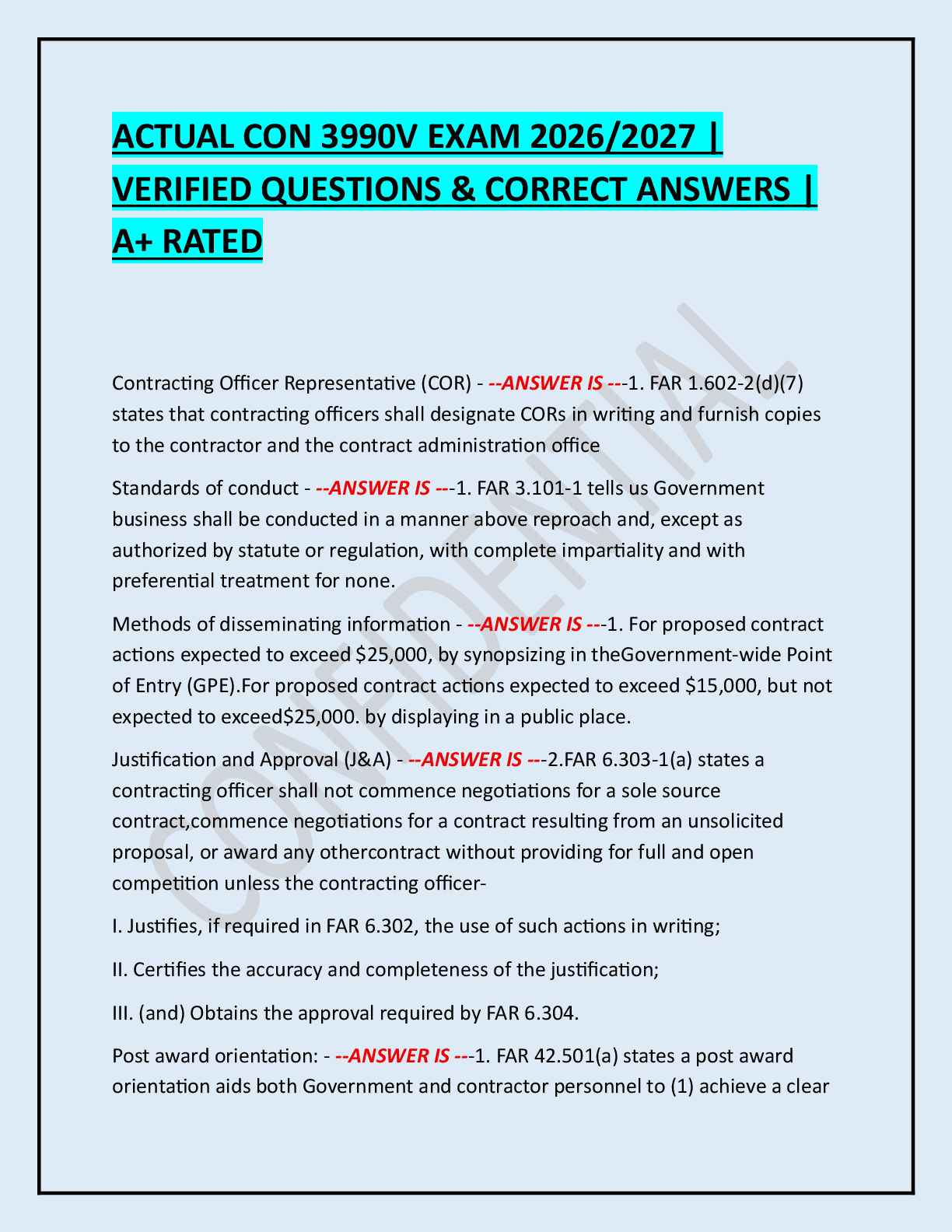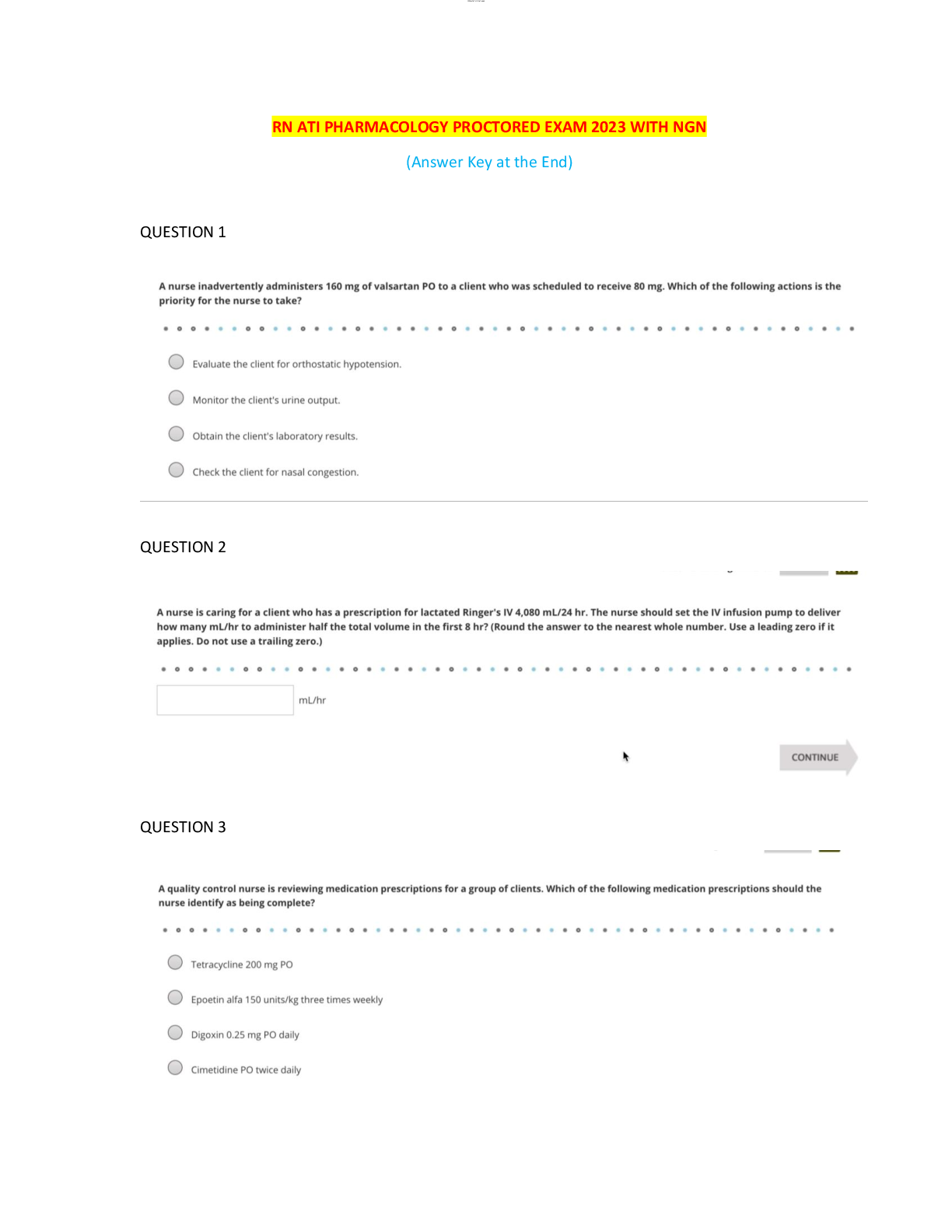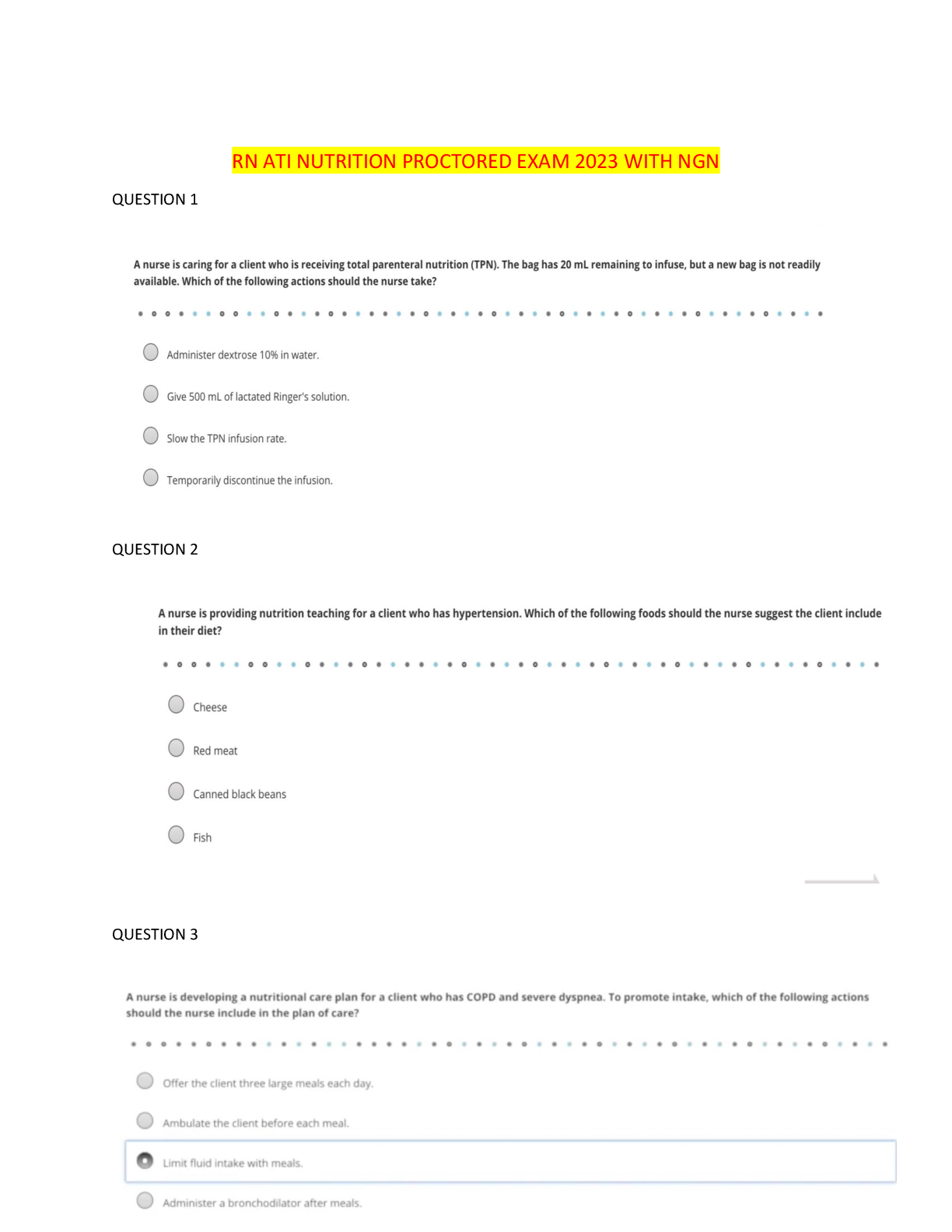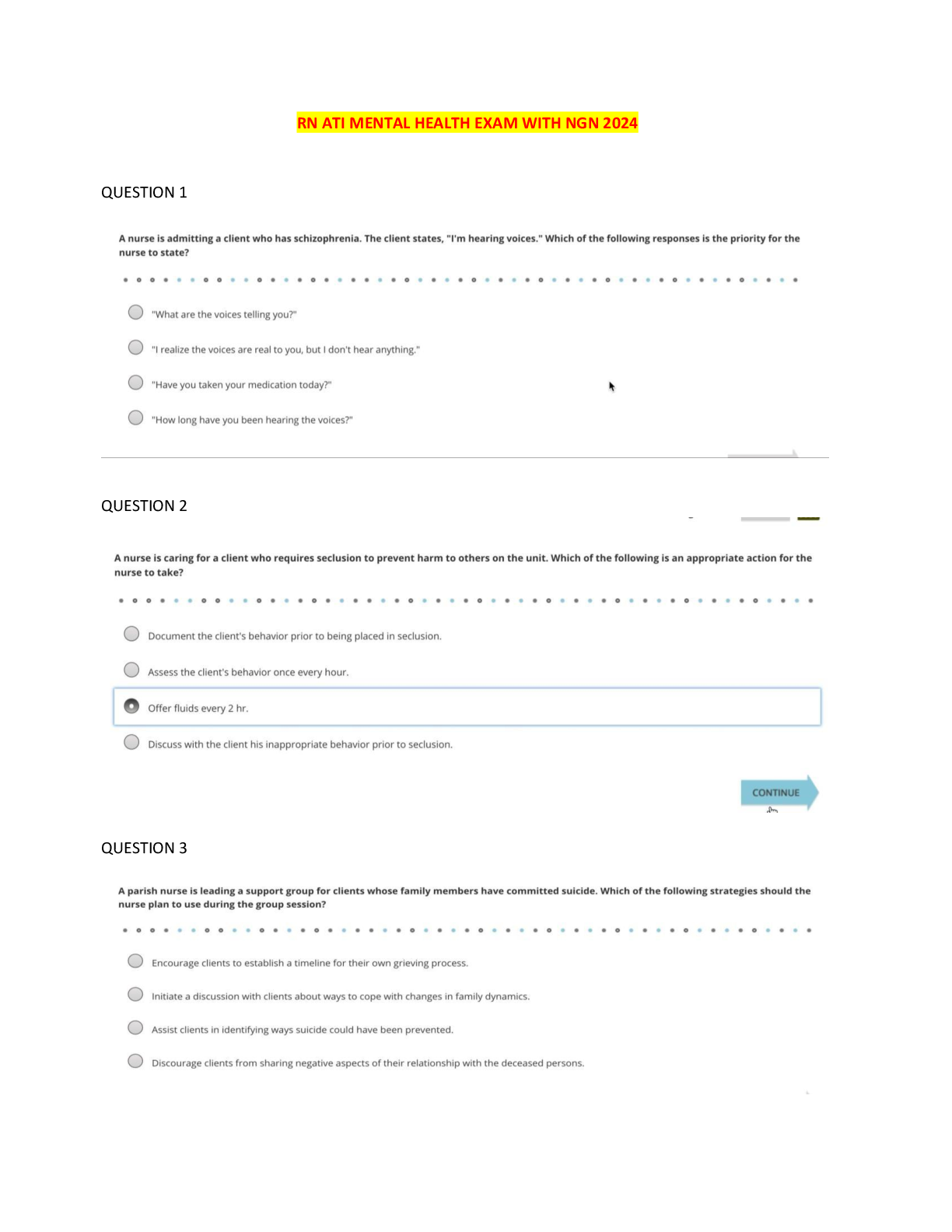Health Care > ATI > ATI Nutrition proctored exam Remediation 2012 (All)
ATI Nutrition proctored exam Remediation 2012
Document Content and Description Below
• Nutrition across the lifespan-dietary needs of older adults o A balanced diet for all adults consists of 40% to 55% carbohydrate and 10% to 20% fat (with no more than 30% fat). o The recommend ... ed amount for protein is unchanged in adults and older adults. However, protein requirements increase in older adults. o Older adults need to reduce total caloric intake. This is due to the decrease in basal metabolic rate that occurs from the decrease in lean body mass that develops with aging. o Dehydration is the most common fluid and electrolyte imbalance in older adults. Fluid needs increase with medication-induced fluid losses • Sources of nutrition: Heme sources of Iron o Iron is responsible for hemoglobin formation/function, cellular oxidation of glucose, antibody production, and collagen synthesis. o Iron supplements may cause constipation, nausea, vomiting, diarrhea, and teeth discoloration (liquid form). They should be taken with food to avert gastrointestinal symptoms, and nurses should encourage fresh fruits, vegetables, and a high-fiber diet. o Food sources include organ meats, egg yolks, whole grains, and green leafy vegetables. o Vitamin C increases the absorption of iron. o The greatest need for iron is the newborn who is not breastfed, and for females during the menstruating years. o • Client teaching about complete protein o From animal sources and soy, contain sufficient amounts of all nine amino acids. • Guideline for healthy eating-health promotion recommendations o Fiber-rich fruits and veggies, whole grains, low fat or fat free milk, lean meats, poultry, fish, legumes, eggs, and nuts. o Limited saturated and trans fats, sugars, and alcohol. • Diabetes Mellitus: Evaluating client understanding of nutritional needs o Carbs should be 45-65% of total daily caloric intake and minimum of 130 g/day. o Saturated fats should be less than 7% of daily calories. o Fiber intake should be at least 14 grams per 1,000 calories. o Protein would be 15-20% of total caloric intake. o Patient with DM should be educated that in order to avoid hypoglycemia, they should consume alcohol with a meal or immediately after a meal • Evaluating client understanding of a low-saturated fat diet [Show More]
Last updated: 3 years ago
Preview 1 out of 9 pages
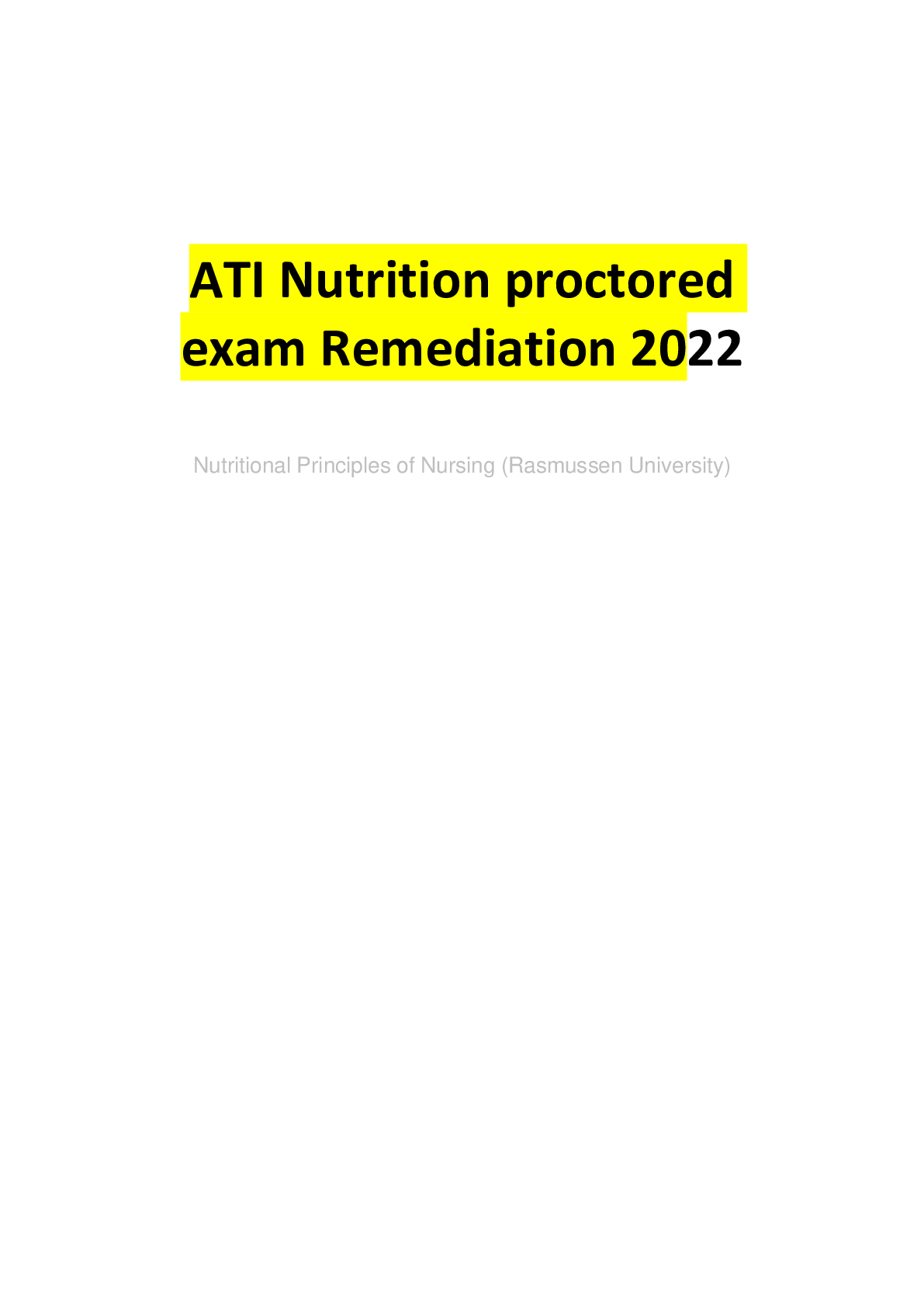
Buy this document to get the full access instantly
Instant Download Access after purchase
Buy NowInstant download
We Accept:

Reviews( 0 )
$10.00
Can't find what you want? Try our AI powered Search
Document information
Connected school, study & course
About the document
Uploaded On
Oct 22, 2022
Number of pages
9
Written in
All
Additional information
This document has been written for:
Uploaded
Oct 22, 2022
Downloads
1
Views
120

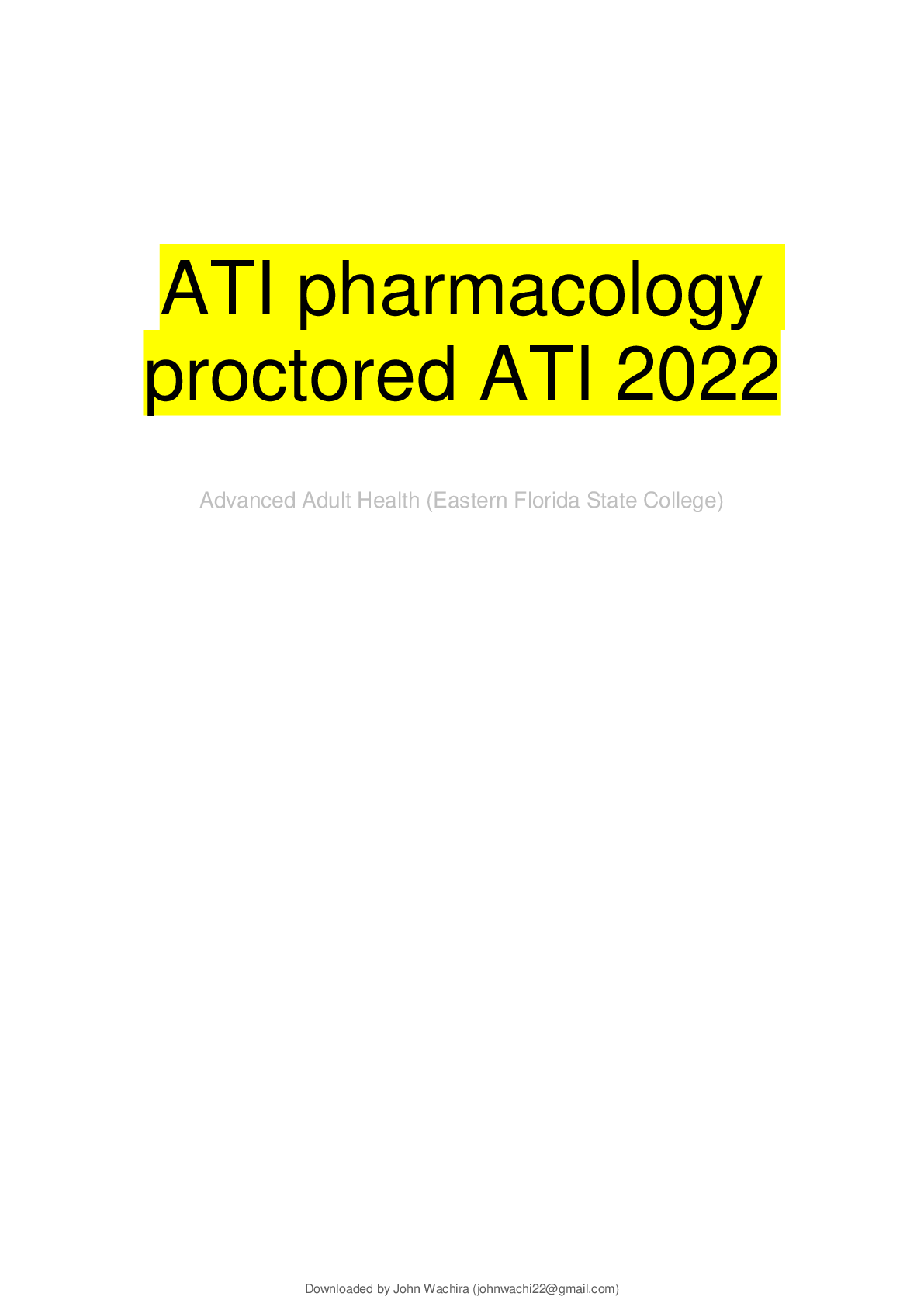



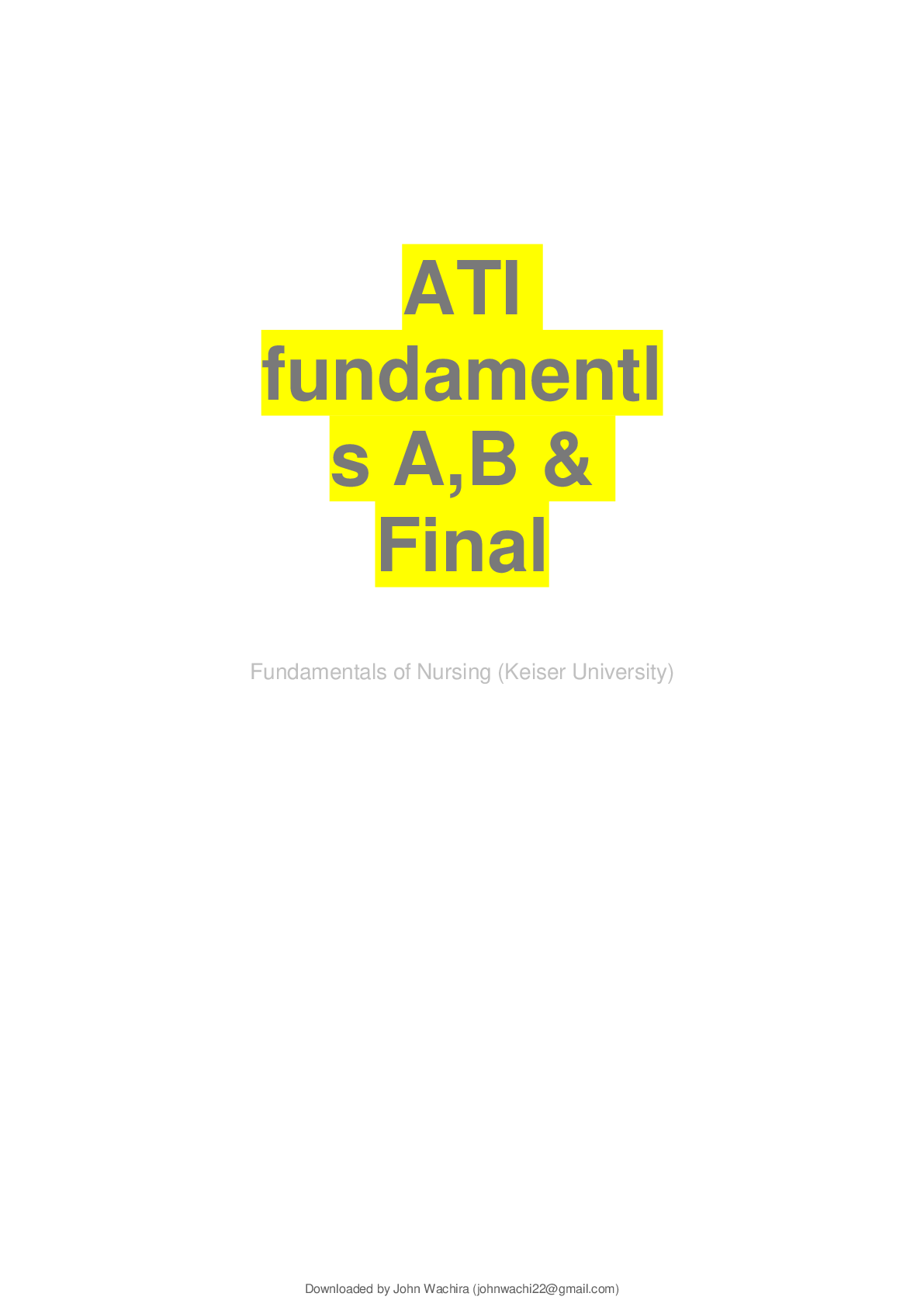
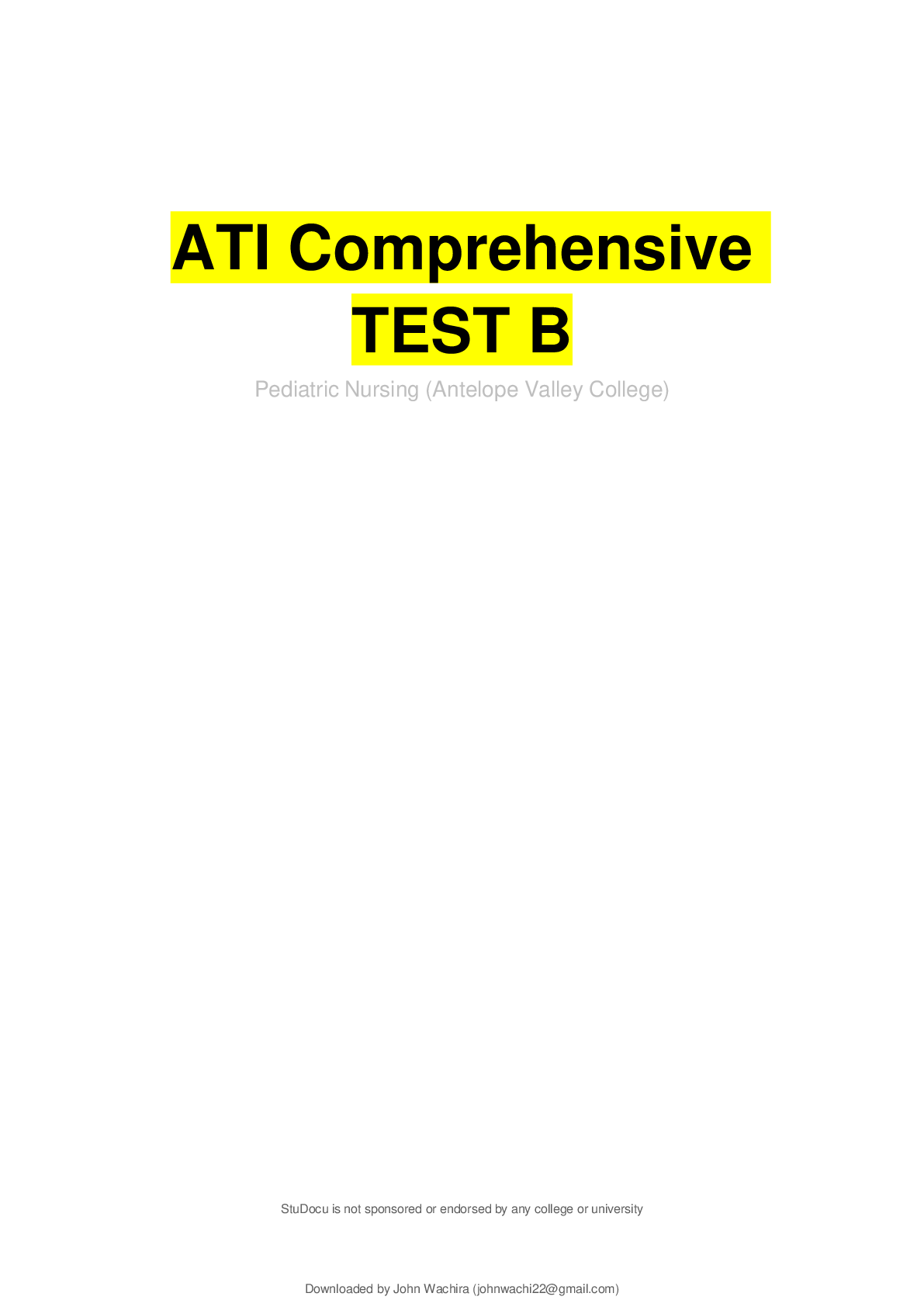


.png)
